-
Neueste Beiträge
Neueste Kommentare
- Jazzybee bei Geheimnisse einer Kaiserin
- Heinz Ludwig ErnstH bei Geheimnisse einer Kaiserin
- dinozeros bei Der Idiot
- Gudrun Philipp bei Der Winterkrieg – Finnland 1939/1940
- Thomas Wrage bei Der Winterkrieg – Finnland 1939/1940
Meta
Archive
- Juni 2024
- Mai 2024
- April 2024
- März 2024
- Februar 2024
- Januar 2024
- Dezember 2023
- November 2023
- Oktober 2023
- September 2023
- August 2023
- Juli 2023
- Juni 2023
- Mai 2023
- April 2023
- März 2023
- Februar 2023
- Januar 2023
- Dezember 2022
- November 2022
- Oktober 2022
- August 2022
- Juli 2022
- Juni 2022
- Mai 2022
- April 2022
- März 2022
- Februar 2022
- Januar 2022
- Dezember 2021
- November 2021
- Oktober 2021
- September 2021
- August 2021
- Juli 2021
- Juni 2021
- Mai 2021
- April 2021
- März 2021
- Februar 2021
- Januar 2021
- Dezember 2020
- November 2020
- Oktober 2020
- September 2020
- August 2020
- Juli 2020
- Juni 2020
- Mai 2020
- April 2020
- März 2020
- Februar 2020
- Januar 2020
- Dezember 2019
- November 2019
- Oktober 2019
- September 2019
- August 2019
- Juli 2019
- Juni 2019
- Mai 2019
- April 2019
- März 2019
- Februar 2019
- Januar 2019
- Dezember 2018
- November 2018
- Oktober 2018
- September 2018
- August 2018
- Juli 2018
- Juni 2018
- Mai 2018
- April 2018
- März 2018
- Februar 2018
- Januar 2018
- Dezember 2017
- November 2017
- Oktober 2017
- September 2017
- August 2017
- Juli 2017
- Juni 2017
- Mai 2017
- April 2017
- März 2017
- Januar 2017
- Dezember 2016
- November 2016
- Oktober 2016
- Juni 2016
- November 2011
Kategorien
- American History (English) (291)
- Alaska (1)
- American Revolution (3)
- California (27)
- Civil War (21)
- Connecticut (6)
- District of Columbia (9)
- Florida (4)
- Georgia (4)
- Historic Highways (12)
- Historical Travelogues (16)
- Illinois (9)
- Indiana (2)
- Maryland (6)
- Massachusetts (24)
- Michigan (7)
- Minnesota (1)
- Missouri (4)
- New Jersey (3)
- New York (25)
- North Carolina (3)
- Ohio (4)
- Oregon (1)
- Pennsylvania (9)
- Tennessee (1)
- Texas (16)
- The Presidents (49)
- Utah (2)
- Washington (3)
- Wisconsin (5)
- Ancient History (English) (13)
- Antike Philosophie (3)
- Astrologie (1)
- Biographies (English) (48)
- Chinesische Philosophie (3)
- Christmas (English) (18)
- Classics of Fiction (English) (663)
- Alcott, Louisa May (29)
- Austen, Jane (11)
- Barrie, James M. (14)
- Baum, L. Frank (17)
- Carroll, Lewis (7)
- Cather, Willa (4)
- Chesterton, G. K. (37)
- Chopin, Kate (4)
- Coleridge, Samuel Taylor (11)
- Collins, Wilkie (39)
- Dickens, Charles (20)
- Doyle, Arthur Conan (46)
- Eliot, George (14)
- Frederic, Harold (12)
- Frost, Robert (1)
- Gibran, Khalil (0)
- Goethe, Johann Wolfgang von (2)
- Hardy, Thomas (11)
- Hawthorne, Nathaniel (3)
- Hedin, Sven (6)
- Hodgson-Burnett, Frances (25)
- Hoffmann, E.T.A. (1)
- Hope, Anthony (31)
- Howells, William Dean (72)
- Hugo, Victor (25)
- Irving, Washington (12)
- Kneipp, Sebastian (2)
- Lang, Andrew (31)
- Longfellow, Henry Wadsworth (1)
- Melville, Herman (9)
- Montgomery, Lucy Maud (15)
- Scott, Sir Walter (8)
- Shelley, Mary Wollstonecraft (8)
- Stevenson, Robert Louis (34)
- Stories For Sleepless Nights (1)
- Stratton-Porter, Gene (16)
- Thoreau, Henry David (1)
- Toomer, Jean (2)
- Twain, Mark (33)
- Verne, Jules (6)
- Webster, Jean (8)
- Wells, H.G. (9)
- Wharton, Edith (1)
- Wollstonecraft, Mary (7)
- Culture, Sports & Entertainment (English) (1)
- Deutscher Novellenschatz (24)
- Deutschland unter Kaiser Wilhelm II. (8)
- Die Geschichte des Eisens (10)
- Die Schriften der Kirchenväter (104)
- Die verlorenen Bücher der Bibel (30)
- Elisabeth von Österreich – Die Kollektion (4)
- European History (English) (18)
- Fairy Tales and Mythology (English) (3)
- Kinderbücher (15)
- Krimis aus der goldenen Zeit (10)
- Lateinische Klassiker (10)
- Ammianus Marcellinus (1)
- Apuleius (2)
- Boethius (1)
- Catullus (1)
- Celsus (1)
- Cicero (2)
- Julius Caesar (2)
- Märchen & Sagen (13)
- Mathematik Zahlentrainer (38)
- Meisterwerke der Literatur (1.050)
- A (29)
- Achleitner-Arthur (0)
- Adler, Emma (1)
- Adlersfeld-Eufemia von (1)
- Aho-Juhani (0)
- Alcott, Louisa May (4)
- Alexis-Willibald (0)
- Alighieri-Dante (2)
- Allen-James (1)
- Altenberg-Peter (3)
- Andersen-Hans Christian (1)
- Andrejew-Leonid (1)
- Anzengruber-Ludwig (6)
- Arbiter-Gaius Petronius (1)
- Aretz-Gertrude (1)
- Aristophanes (1)
- Aristoteles (1)
- Arndt-Ernst Moritz (0)
- Arnim – Achim von (1)
- Arnim-Bettina von (0)
- Äsop (1)
- Auerbach-Berthold (1)
- Augustinus-Aurelius (1)
- Aurel-Marc (1)
- B (70)
- Bacon, Francis (1)
- Bahr-Hermann (10)
- Ball, Hugo (1)
- Balzac-Honoré de (4)
- Barbusse-Henri (1)
- Bassewitz-Gerd von (1)
- Baudelaire-Charles (1)
- Bauer, Karoline (1)
- Bauer-Otto (0)
- Baum-L. Frank (2)
- Bebel-August (0)
- Bechstein, Ludwig (1)
- Beck-Jürgen (2)
- Beecher-Stowe-Harriet (1)
- Benjamin-Walter (0)
- Berend-Alice (0)
- Bernhardi-Sophie (0)
- Bettauer-Hugo (2)
- Birt – Theodor (0)
- Bismarck-Otto von (1)
- Bjornson-Bjornstjerne (0)
- Blei-Franz (0)
- Bleibtreu-Karl (4)
- Boccaccio-Giovanni (1)
- Böhlau-Helene (0)
- Bote-Hermann (1)
- Boy Ed, Ida (8)
- Boyer-Jean Baptiste (1)
- Braun-Lily (0)
- Brentano-Clemens (8)
- Bronté-Charlotte (1)
- Bruun-Laurids (0)
- Büchner-Georg (2)
- Büchner-Luise (1)
- Bulwer-Lytton-Edward (1)
- Bunyan, John (3)
- Burckhardt-Jacob (0)
- Bürger-Gottfried August (1)
- Burnett-Frances Hodgson (1)
- Busch-Wilhelm (7)
- Byron-George (0)
- C (32)
- Carroll-Lewis (1)
- Carus-Carl Gustav (0)
- Chaucer-Geoffrey (1)
- Chesterton-Gilbert Keith (1)
- Choderlos-P.A. de Laclos (1)
- Christ-Lena (5)
- Cicero (2)
- Claudius-Matthias (1)
- Clausewitz-Carl von (1)
- Colerus-Egmont (3)
- Collins-Wilkie (2)
- Collodi-Carlo (1)
- Connell-Richard (1)
- Conrad-Joseph (3)
- Conrad-Michael Georg (1)
- Conwell-Russell (1)
- Cooper-James-Fenimore (5)
- Corvin-Otto von (1)
- Couperus-Louis (0)
- Crusenstolpe-Magnus Jacob (1)
- D (73)
- Dahn-Felix (0)
- Darwin-Charles (1)
- Daudet-Alphonse (10)
- Daumer-Georg Friedrich (1)
- Dauthendey-Max (8)
- Defoe-Daniel (3)
- Delbrück-Hans (0)
- Dickens-Charles (13)
- Diderot-Denis (3)
- Dohm-Hedwig (4)
- Dostojewski-Fjodor (8)
- Doyle-Arthur-Conan (5)
- Drews-Arthur (1)
- Droste-Hülshoff-Annette (2)
- Droysen-Johann Gustav (1)
- Dumas-Alexandre (9)
- Duncker-Dora (4)
- E (43)
- Ebers-Georg (4)
- Ebner-Eschenbach-Marie (0)
- Eckstein-Ernst (1)
- Eichendorff-Joseph von (2)
- Elvestad-Sven (8)
- Emmerich-Ferdinand (7)
- Engel-Georg (4)
- Engels-Friedrich (1)
- Ernst-Otto (0)
- Ernst-Paul (0)
- Ertl-Emil (0)
- Eschenbach-Wolfram von (1)
- Eschstruth-Nataly von (9)
- Essig-Hermann (3)
- Eucken-Rudolf (0)
- Eulenburg-Philipp zu (1)
- Euripides (1)
- Eyth-Max (1)
- F (73)
- Faber-Kurt (5)
- Falke-Gustav (6)
- Federer-Heinrich (4)
- Felder-Franz Michael (1)
- Feuerbach-Ludwig (1)
- Fichte-Johann Gottlieb (0)
- Fielding-Henry (2)
- Flammarion-Camille (1)
- Flaubert-Gustave (1)
- Fletcher-Joseph Smith (5)
- Fock-Gorch (2)
- Fontane-Theodor (15)
- Forster-Georg (1)
- Fouqué-Friedrich-de-Motte (0)
- Frankau, Julia (1)
- Franklin-Benjamin (1)
- Franzos-Karl Emil (8)
- Frapan, Ilse (2)
- Freud-Sigmund (5)
- Freytag-Gustav (7)
- Friedell-Egon (4)
- G (72)
- Gaboriau-Emile (1)
- Galen-Philipp (1)
- Ganghofer-Ludwig (15)
- Garschin-Wsewolod (1)
- Gellert-Christian Fürch. (1)
- George-Stefan (1)
- Gerhardt-Paul (1)
- Gerstäcker-Friedrich (3)
- Gibbon-Edward (1)
- Gilman-Charlotte-Perkins (1)
- Gjellerup-Karl Adolph (5)
- Glauser-Friedrich (7)
- Goethe-Johann W. von (6)
- Gogol-Nikolai (3)
- Goldoni-Carlo (1)
- Gontscharow-Iwan (1)
- Gorki-Maxim (4)
- Gotthelf-Jeremias (6)
- Gregorovius-Ferdinand (1)
- Grimmelshausen-Hans Jakob (1)
- Günther-Agnes (1)
- Gutzkow-Karl (10)
- H (66)
- Hahn-Hahn-Ida Gräfin (5)
- Hansjakob-Heinrich (3)
- Hasek-Jaroslav (1)
- Hauff-Wilhelm (5)
- Hebel-Johann Peter (2)
- Hedin, Sven (2)
- Heer-Jakob Christoph (7)
- Hegel-Georg Wilhelm (4)
- Heiberg-Hermann (5)
- Heine-Heinrich (2)
- Herder-Johann Gottfried (1)
- Herodot (1)
- Hillern-Wilhelmine von (1)
- Hindenburg-Paul von (1)
- Hoffmann-Andreas Gottlieb (1)
- Hoffmann-E.T.A. (7)
- Hofmannsthal-Hugo von (7)
- Hölderlin-Friedrich (2)
- Holub-Emil (1)
- Homer (2)
- Horvath-Ödön von (1)
- Hugo-Victor (2)
- Huysmans-Joris Karl (1)
- I (10)
- Ibsen-Henrik (7)
- Irving-Washington (3)
- J (6)
- Jensen-Wilhelm (6)
- K (61)
- Kafka-Franz (3)
- Kant-Immanuel (2)
- Katharina-die-Große (1)
- Keats-John (1)
- Keller-Gottfried (4)
- Keller-Paul (7)
- Kempen-Thomas von (1)
- Keyserling-Eduard von (6)
- Kierkegaard-Sören (3)
- Kipling-Rudyard (4)
- Klabund (1)
- Kleist-Heinrich von (2)
- Klingemann-August (1)
- Klinger-Friedrich Maximilian (1)
- Klopstock-Friedrich Gottlieb (1)
- Kneipp, Sebastian (2)
- Knigge-Adolf Freiherr von (1)
- Koch-Rosalie (1)
- Korolenko-Wladimir (1)
- Kotzebue, August von (1)
- Kraft-Robert (5)
- Kraus-Karl (4)
- Kropotkin, Pjotr (0)
- Kropotkin-Pjotr (2)
- Kugler-Franz (1)
- Kurz-Hermann (3)
- Kyber-Manfred (2)
- L (45)
- La Roche-Sophie von (1)
- Lafontaine-Jean de (1)
- Lagerlöf-Selma (4)
- Landsberger-Artur (7)
- Laßwitz-Kurd (1)
- Laube-Heinrich (6)
- Lermontow-Michail (1)
- Lessing-Gotthold Ephraim (3)
- Lichtenberg-Georg Christoph (1)
- Lienhard-Friedrich (4)
- Lindau-Paul (1)
- Lofting-Hugh (2)
- Löns-Hermann (2)
- Loti-Pierre (2)
- Lovecraft, H. P. (3)
- Ludwig-Otto (3)
- Luther-Martin (3)
- M (105)
- Macaulay-Thomas B. (2)
- MacDonald-George (1)
- Machiavelli-Niccolo (2)
- Mackay-John Henry (6)
- Mann, Heinrich (10)
- Manzoni-Alessandro (1)
- Marlitt-Eugenie (9)
- Marx-Karl (2)
- Maupassant-Guy de (1)
- Mauthner-Fritz (0)
- May-Karl (37)
- Meding-Oskar (9)
- Mereschkowski-Dmitri (1)
- Meyer-Eduard (0)
- Meyrink-Gustav (1)
- Milton-John (1)
- Molière (4)
- Mommsen-Theodor (6)
- Montaigne-Michel de (1)
- Morgenstern-Christian (1)
- Mörike-Eduard (3)
- Moritz-Karl Philipp (1)
- Morus-Thomas (1)
- Moszkowski-Alexander (2)
- Mühsam-Erich (1)
- Multatuli (1)
- Muther-Richard (1)
- N (13)
- Nestroy-Johann (2)
- Niese-Charlotte (4)
- Nietzsche-Friedrich (5)
- Northup-Solomon (1)
- Novalis (1)
- O (14)
- Ohnet-Georges (9)
- Ossietzky-Carl von (0)
- Otto-Louise (4)
- Ovid (1)
- P (21)
- Panizza-Oskar (3)
- Petrarca-Francesco (1)
- Pfalz-Liselotte von der (1)
- Philon (0)
- Platon (5)
- Poe-Edgar Allan (1)
- Potapenko-Ignatji (1)
- Prévost-Marcel (5)
- Puschkin-Alexander (2)
- Pyle, Ernie (2)
- R (41)
- Rabelais-Francois (1)
- Rellstab-Ludwig (2)
- Retcliffe-Sir John (2)
- Reymont-Wladyslaw (1)
- Rhoden-Emmy von (1)
- Richthofen-Manfred von (1)
- Rilke-Rainer Maria (2)
- Ringelnatz-Joachim (2)
- Rohlfs-Gerhard (1)
- Rolfes, Eugen (1)
- Rosegger-Peter (11)
- Rosen-Erwin (1)
- Rostand-Edmond (2)
- Roth-Joseph (8)
- Rousseau-Jean Jacques (3)
- Rückert-Friedrich (2)
- S (102)
- Sade-Marquis de (1)
- Saint Exupéry, Antoine de (1)
- Salgari-Emilio (1)
- Sapper-Agnes (1)
- Scheerbart-Paul (10)
- Schickele-René (4)
- Schiller-Friedrich (11)
- Schlegel-Friedrich (1)
- Schlenther-Paul (1)
- Schnitzler-Arthur (2)
- Schopenhauer-Arthur (3)
- Schreckenbach-Paul (2)
- Schröder-Devrient-Wilhelmine (1)
- Schubin, Ossip (1)
- Schurig-Arthur (1)
- Schwab-Gustav (0)
- Scott-Sir Walter (1)
- Semjonow-Sergej (1)
- Seneca-Lucius Annaeus (0)
- Seume-Johann Gottfried (1)
- Shakespeare-William (16)
- Shelley-Mary Wollstonecraft (1)
- Sienkiewicz-Henryk (1)
- Silesius-Angelus (1)
- Simmel-Georg (0)
- Simrock-Karl (2)
- Sonnleitner-Alois Theodor (3)
- Sophokles (5)
- Spengler-Oswald (2)
- Spindler-Karl (3)
- Spinoza-Baruch de (2)
- Sprenger-Jakob (1)
- Spyri-Johanna (0)
- Stael-Germaine de (1)
- Steiner-Rudolf (2)
- Stendhal (3)
- Sterne-Laurence (1)
- Stevenson-Robert Louis (1)
- Stifter-Adalbert (1)
- Stoker-Bram (1)
- Storm-Theodor (5)
- Straßburg-Gottfried von (1)
- Stucken-Eduard (2)
- Suttner-Bertha von (2)
- Swift-Jonathan (1)
- T (38)
- Tagore-Rabindranath (1)
- Thoma-Ludwig (5)
- Thoreau-Henry David (1)
- Tieck-Ludwig (1)
- Tolstoi-Leo (11)
- Treller-Franz (1)
- Tschechow-Anton (6)
- Tucholsky-Kurt (3)
- Turgenew-Ivan (2)
- Twain-Mark (7)
- U (10)
- Ungar-Hermann (0)
- Ury-Else (10)
- V (28)
- Verne-Jules (26)
- Voltaire (1)
- W (63)
- Wagner-Richard (1)
- Wallace-Edgar (46)
- Wallace-Lewis (1)
- Walpole-Horace (1)
- Wassermann-Jakob (2)
- Weber-Max (0)
- Wells-H. G. (2)
- Whitman-Walt (1)
- Wilde-Oscar (5)
- Wolzogen-Caroline von (1)
- Wörishöffer-Sophie (1)
- Wundt-Wilhelm (1)
- Wyss-Johann David (1)
- Y (1)
- Young, Filson (1)
- Z (30)
- Zola-Emile (18)
- Zweig-Stefan (11)
- A (29)
- Middle East History (English) (20)
- Mind Power (English) (30)
- Opern der Welt (11)
- Philosophie (4)
- Philosophy & Politics (English) (151)
- 17th Century (1)
- 18th Century (49)
- 19th Century (61)
- 20th Century (2)
- Ancient (24)
- Middle Ages (2)
- Renaissance (14)
- Poetik (4)
- Recht (4)
- Religionen der Welt (92)
- Calvin, Johannes (17)
- Sachbücher (30)
- Sam Caine (Krimiserie) (5)
- Schlachten des II. Weltkriegs (45)
- Science (English) (1)
- 19th Century (1)
- Sport (0)
- The Sacred Books (English) (298)
- Astrology (2)
- Biblical Reference (3)
- Biblical Studies & Commentaries (61)
- Buddhism (27)
- Children's Great Bible Texts (8)
- Christology (18)
- Church History (63)
- Divination (4)
- Ethnic & Tribal (6)
- Freemasonry (18)
- Gnosticism (3)
- Judaism (3)
- Life of Jesus (2)
- Mariology (4)
- Mysticism (33)
- Occultism (22)
- Prayers & Sermons (3)
- Protestant (1)
- Spirituality (16)
- The Sacred Writings (33)
- Theosophy (3)
- Yoga (13)
- Weihnachten (11)
- Weltgeschichte (14)
- 18. Jahrhundert (1)
- 19. Jahrhundert (9)
- Altertum (0)
- I. Weltkrieg (3)
- II. Weltkrieg (1)
- World History (English) (17)
- American History (English) (291)
Archiv der Kategorie: Stevenson, Robert Louis
Weir of Hermiston
Weir of Hermiston – Robert Louis Stevenson
“ Virginibus Puerisque” is a collection of short essays and mostly a record of Stevenson’s opinions – which means, largely, of his likes and dislikes. It all comes back to his sympathy with the juvenile, and that feeling about life which leads him to regard women as so many superfluous girls in a boy’s game.
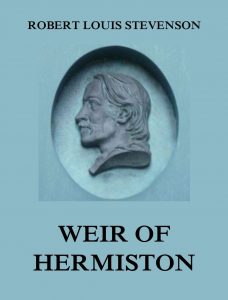
Weir of Hermiston
Format: Paperback.
Weir of Hermiston.
ISBN: 9783849675837.
Available at amazon.com and other venues.
Biography of Robert Louis Stevenson (from Wikipedia):
Robert Louis Balfour Stevenson (13 November 1850 – 3 December 1894) was a Scottish novelist, poet, essayist, and travel writer. His most famous works are Treasure Island, Kidnapped, Strange Case of Dr Jekyll and
Veröffentlicht unter Classics of Fiction (English), Stevenson, Robert Louis
Schreib einen Kommentar
Virginibus Puerisque and other papers
Virginibus Puerisque and other papers – Robert Louis Stevenson
“ Virginibus Puerisque” is a collection of short essays and mostly a record of Stevenson’s opinions – which means, largely, of his likes and dislikes. It all comes back to his sympathy with the juvenile, and that feeling about life which leads him to regard women as so many superfluous girls in a boy’s game.
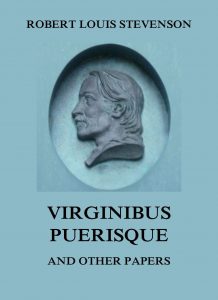 Virginibus Puerisque and other papersFormat: Paperback.
Virginibus Puerisque and other papersFormat: Paperback.
Virginibus Puerisque and other papers.
ISBN: 9783849675820.
Available at amazon.com and other venues.
Biography of Robert Louis Stevenson (from Wikipedia):
Robert Louis Balfour Stevenson (13 November 1850 – 3 December 1894) was a Scottish novelist, poet, essayist, and travel writer. His most famous works are Treasure Island, Kidnapped, Strange
Veröffentlicht unter Classics of Fiction (English), Stevenson, Robert Louis
Schreib einen Kommentar
Vailima Letters
Vailima Letters – Robert Louis Stevenson
The value of these letters lies in their being like their writer. All Stevenson’s work, when it was successful, was a more or less literal transcription of his everyday self. Even his literary discipline tended and helped to this end, instead of to the production of an artificial and unfamiliar self. No writer owed so much to his own social qualities ; and his popularity is very far from being an exclusively literary one. His interests, his views of life, his opinions on books, his hopes, his despondencies, his eccentricities, heresies, prejudices, he insinuates into his readers, and they are adopted, cheered, echoed, in most unlikely quarters, not because of their intrinsic worth 01 … Read more.../Mehr lesen ...
Veröffentlicht unter Classics of Fiction (English), Stevenson, Robert Louis
Schreib einen Kommentar
Treasure Island
Treasure Island – Robert Louis Stevenson
The book which made Stevenson famous, and has since become a classic among tales of adventure, to be ranked with “Robinson Crusoe”. Its appearance did much more than establish him as a writer for boy readers. In fact, the book was not instantaneously a success among readers of that day, pledged to Captain Marry at and his imitators. But it brought Stevenson prominently to the notice of an elder public, able to perceive the uncommon power of romantic description which marked Treasure Island from previous tales of adventure. A couple of years passed before this yarn of buccaneers and mutiny on the high seas became one of the most popular of boys’ books. Meanwhile … Read more.../Mehr lesen ...
Veröffentlicht unter Classics of Fiction (English), Stevenson, Robert Louis
Schreib einen Kommentar
The Essential Travel Writings
The Essential Travel Writings – Robert Louis Stevenson
“The Story of a Lie”has a curious bibliography. It was written in August, 1879 on a voyage from Glasgow to New York, “in a slantindicular cabin, with the table playing bob-cherry with the ink-bottle.” It was sold to Kegan Paul’s “withered babe, the New Quarterly,” a periodical of brief existence, where it appeared in October, 1879, having been forwarded to Mr. Sidney Colvin immediately on the author’s arrival in America. R. L. S. was anxious to know what impression it made upon his friends, who were told to “ remember that it was written at sea in great anxiety of mind,” but it did not, in the agitated history of his affairs, … Read more.../Mehr lesen ...
Veröffentlicht unter Classics of Fiction (English), Stevenson, Robert Louis
Schreib einen Kommentar
The Story of a Lie
The Story of a Lie – Robert Louis Stevenson
“The Story of a Lie”has a curious bibliography. It was written in August, 1879 on a voyage from Glasgow to New York, “in a slantindicular cabin, with the table playing bob-cherry with the ink-bottle.” It was sold to Kegan Paul’s “withered babe, the New Quarterly,” a periodical of brief existence, where it appeared in October, 1879, having been forwarded to Mr. Sidney Colvin immediately on the author’s arrival in America. R. L. S. was anxious to know what impression it made upon his friends, who were told to “ remember that it was written at sea in great anxiety of mind,” but it did not, in the agitated history of his … Read more.../Mehr lesen ...
Veröffentlicht unter Classics of Fiction (English), Stevenson, Robert Louis
Schreib einen Kommentar
In The South Seas
In The South Seas – Robert Louis Stevenson
In the South Seas, as here available to the reader, is the result of a journey on the ‘Casco’ together with Stevenson’s mother, wife and stepson. The earlier parts, those on the Marquesas and Paumotos, or low or atoll islands, most definitely mark Stevenson’s original intention ; those on the Gilberts, with their picture of the king Tembinok, are more in the personal strain of R. L. S., and are thus accepted as the most successful part of these writings. But the things most to be regretted about them is their omissions ; nothing of Stevenson’s long stay at Tautira as the guest of the chief Ori a Ori, nor of his … Read more.../Mehr lesen ...
Veröffentlicht unter Classics of Fiction (English), Stevenson, Robert Louis
Schreib einen Kommentar
The Poetical Works
The Poetical Works – Robert Louis Stevenson
This edition contains Mr. Stevenson’s poetical works, divided into the following sections:
A Child’s Garden Of Verses
The child alone
Garden Days
Envoys
Underwoods
Ballads
Songs Of Travel
Additional Poems
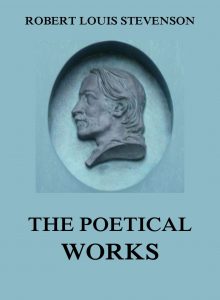
The Poetical Works
Format: Paperback.
The Poetical Works.
ISBN: 9783849675769.
Available at amazon.com and other venues.
Biography of Robert Louis Stevenson (from Wikipedia):
Robert Louis Balfour Stevenson (13 November 1850 – 3 December 1894) was a Scottish novelist, poet, essayist, and travel writer. His most famous works are Treasure Island, Kidnapped, Strange Case of Dr Jekyll and Mr Hyde, and A Child’s Garden of Verses.
A literary celebrity during his lifetime, Stevenson now ranks as the 26th most translated author in the … Read more.../Mehr lesen ...
Veröffentlicht unter Classics of Fiction (English), Stevenson, Robert Louis
Schreib einen Kommentar
The Silverado Squatters
The Silverado Squatters – Robert Louis Stevenson
Robert Louis Stevenson’s volume grew out of a few weeks’ sojourn of the author and his wife in a deserted miner’s cabin on the heights of Mount Saint Helena, in the California Coast Range. In a series of short sketches or chapters, Mr. Stevenson describes the incidents which befell him and his companion. One can conceive that a most entertaining history might be written of a summer’s residence in a sequestered nook among stately and remote mountains. The smallest everyday affairs rise out of the commonplace in such quaint and picturesque circumstances, affording abundant matter for a ready writer to work upon.
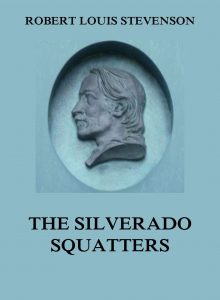
The Silverado Squatters
Format: Paperback.
The Silverado Squatters.
ISBN: 9783849675752.
Available … Read more.../Mehr lesen ...
Veröffentlicht unter Classics of Fiction (English), Stevenson, Robert Louis
Schreib einen Kommentar
St. Ives
St. Ives – Robert Louis Stevenson
This tale of adventure, for the most part in a strain of romantic comedy, belongs to the last two years of Stevenson’s life. It tells of the adventures of a French Napoleonic soldier who got captured by British troops.
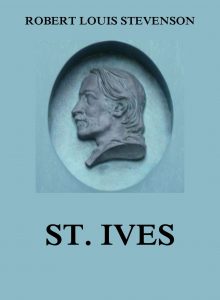
St. Ives
Format: Paperback.
St. Ives.
ISBN: 9783849675745.
Available at amazon.com and other venues.
Biography of Robert Louis Stevenson (from Wikipedia):
Robert Louis Balfour Stevenson (13 November 1850 – 3 December 1894) was a Scottish novelist, poet, essayist, and travel writer. His most famous works are Treasure Island, Kidnapped, Strange Case of Dr Jekyll and Mr Hyde, and A Child’s Garden of Verses.
A literary celebrity during his lifetime, Stevenson now ranks as the … Read more.../Mehr lesen ...
Veröffentlicht unter Classics of Fiction (English), Stevenson, Robert Louis
Schreib einen Kommentar
